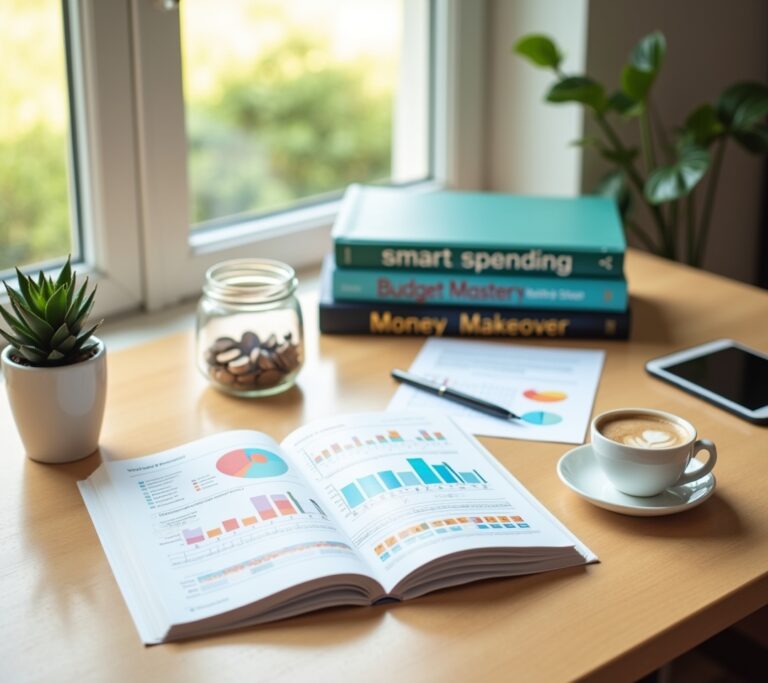Advertisements
Did you know that 65% of Americans don’t know how much they spent last month? I used to be one of them! My financial life was a complete disaster until I discovered the magic of budget planners.
Let me tell you, finding the right budget planner literally saved my sanity (and my savings account). After years of living paycheck to paycheck, I finally got my act together.
In this post, I’ll share the best budget planners that actually work – trust me, I’ve tried them all!
Why Budget Planning Changed My Life

Three years ago, I was drowning in credit card debt. My spending was out of control. I’d buy stuff I didn’t need, forget about bills, and wonder where all my money went.
Then my car broke down. The repair cost $1,200, and I had exactly $47 in my savings account. Talk about a wake-up call!
That’s when I decided to get serious about budgeting. But here’s the thing – I needed something simple that wouldn’t make me want to quit after two days. Sound familiar?
Digital vs. Paper Budget Planners: What Actually Works
OK, so I started with fancy budgeting apps. Downloaded like five of them in one night! But honestly, I kept forgetting to log my expenses.
Then I tried good old-fashioned paper planners. Something about physically writing down my spending made it more real. Plus, I couldn’t ignore that planner sitting on my kitchen counter!
Here’s what I learned: digital works great if you’re tech-savvy and disciplined. Paper planners are perfect if you’re more visual and need that tangible reminder. Some people even use both – whatever floats your boat!
My Top 5 Budget Planners That Don’t Suck
1. The Clever Fox Budget Planner
This one’s my absolute favorite for beginners. It’s got monthly layouts, expense trackers, and even motivational quotes (cheesy but helpful when you’re tempted to splurge).
The best part? It has a savings tracker that shows your progress visually. Watching those bars fill up is oddly satisfying! You can grab one on Amazon for around $20.
2. YNAB (You Need A Budget)
If you’re ready to go digital, YNAB is the real deal. Yeah, it costs $14.99/month, but it paid for itself in the first week when I realized I was spending $80/month on subscription services I forgot about!
The learning curve is kinda steep though. I watched like 10 YouTube tutorials before I got the hang of it. But once you do, it’s life-changing.
3. The Happy Planner Budget Edition
This one’s perfect if you like to make things pretty. I’m talking stickers, colorful pens, the whole nine yards! It makes budgeting feel less like a chore and more like a creative project.
My sister uses this one and decorates it like crazy. Whatever works, right?
4. Mint (The Free Option)
Mint is completely free and syncs with your bank accounts automatically. Super convenient if you’re lazy like me! It categorizes your spending and shows you exactly where your money’s going.
The downside? Sometimes the categories get wonky. Like, it once categorized my grocery store run as “entertainment” – I mean, eating is fun, but come on!
5. The Simplified Budget Planner
This paper planner by Emily Ley is gorgeous and simple. No overwhelming spreadsheets or complicated formulas. Just straightforward monthly budgets and expense tracking.
It’s pricey (around $58), but the quality is amazing. Mine’s survived coffee spills, being tossed in my bag, and my toddler’s artistic attempts.
Budget Planning Tips That Actually Stick
After three years of budgeting, here’s what really works:
- Start tracking for a month without changing anything – you need to see the real picture first
- Use the 50/30/20 rule: 50% needs, 30% wants, 20% savings and debt payoff
- Schedule a weekly “money date” with yourself (I do mine Sunday mornings with coffee)
- Don’t aim for perfection – I still mess up sometimes and that’s OK!
- Celebrate small wins (I treated myself to ice cream when I saved my first $500)
Oh, and here’s a pro tip: put your savings in a separate bank account. Out of sight, out of mind – and way less tempting to spend!
Making Your Budget Planner Work for You

Look, the best budget planner is the one you’ll actually use. I know that sounds obvious, but it took me buying three different planners to figure that out!
Start simple. Track your spending for a month, then gradually add more detailed categories. Rome wasn’t built in a day, and neither is good financial habits.
Remember, budgeting isn’t about depriving yourself – it’s about being intentional with your money. Once I started budgeting, I actually spent MORE on things I loved because I wasn’t wasting money on stupid stuff.
Whether you choose a fancy app or a simple notebook, just start somewhere. Your future self will thank you! And hey, if you’re looking for more money management tips and financial wisdom, check out other posts on Cashflow Zen – we’re all about finding that sweet spot between financial responsibility and actually enjoying life.



